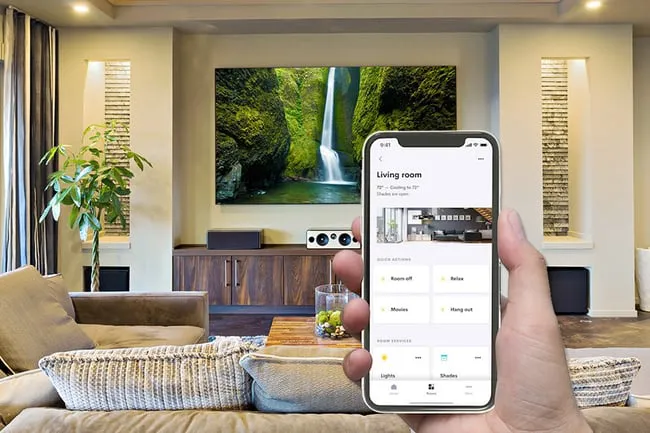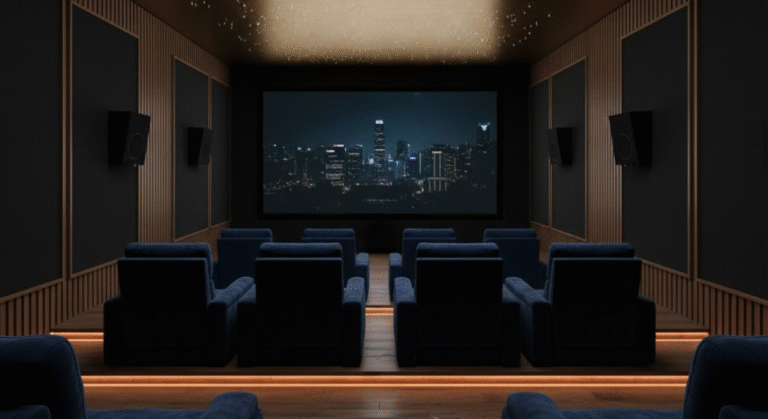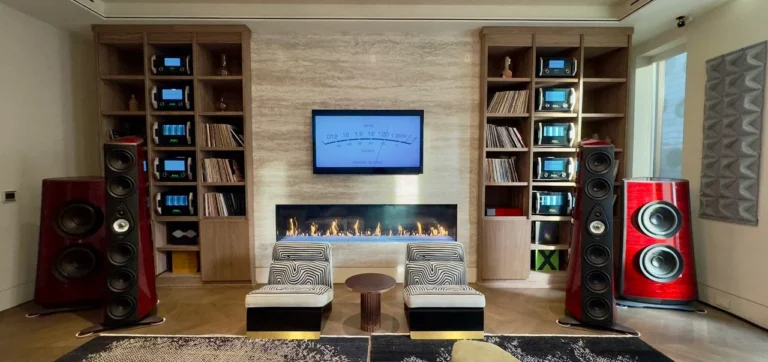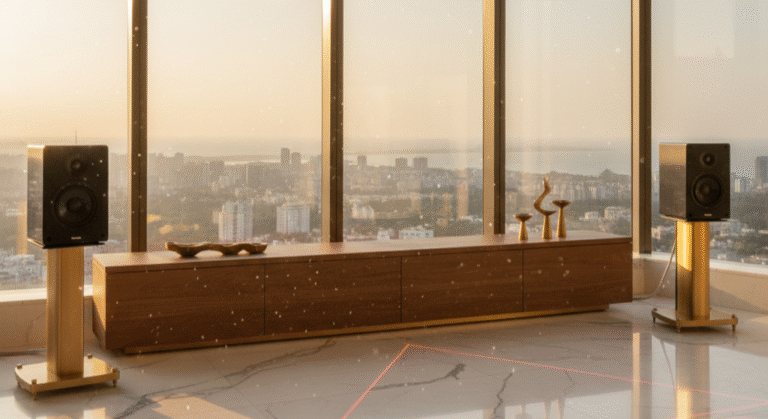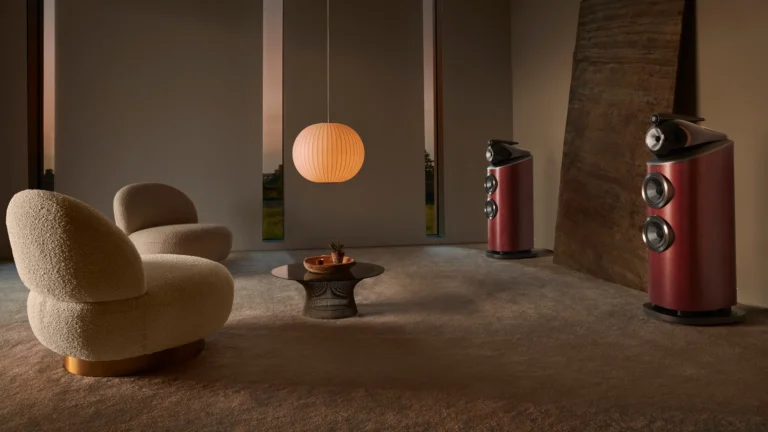Illuminate Your Life: How Automation & Lighting Control Redefine Home Comfort
Home Automation and Lighting Control are the most basic needs of today’s luxury residences. They provide home comfort through exceptional convenience, efficiency, customization, and seamless control over the living environment. Imagine you walk into a home where lights can adjust as per your presence, temperature adapts to your comfort, and security systems provide peace of mind, all co-cordoned effortlessly, making daily tasks more straightforward and more enjoyable. This combination of advanced smart home technology transforms homes into responsive, adaptive spaces that cater to individual comfort and well-being.
The Power of Home Automation
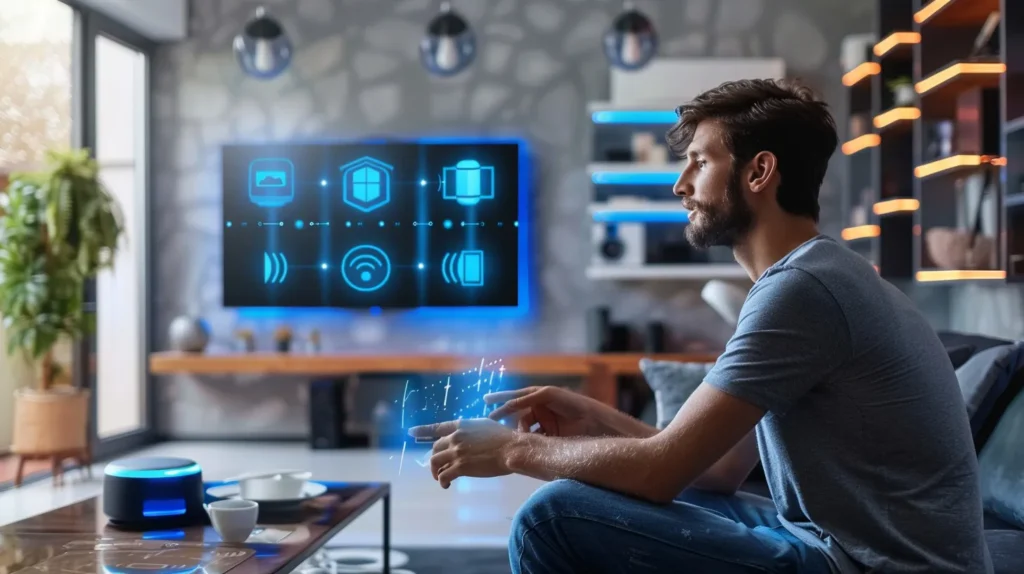
Home automation harnesses the power of cutting-edge technology to transform daily living, giving unparalleled control, convenience, and efficiency. Using Home Automation systems, residents can connect devices such as lighting, heating, security cameras, home appliances, and entertainment to a centralized system and effortlessly adjust lighting and temperature, can control home entertainment and security settings to suit their preferences and routines, creating a more convenient and energy-efficient lifestyle everything can accessible through smartphones or voice commands. This technological advancement not only enhances the quality of life but also promotes sustainability by optimizing resource use, making home automation a pivotal force in modern home management.
Benefits of Lighting Control
Lighting control systems offer many benefits, including enhanced energy efficiency, convenience, comfort, and improved ambiance. By optimizing light usage through dimmers, timers, and motion sensors, custom lighting scenes enhance the home atmosphere, creating an inviting and aesthetically pleasing environment. Additionally, advanced lighting controls add a modern appeal and increase the property’s market value, making it more attractive to potential buyers.
Let’s check some points of which Benefits of Lighting Control:

Energy Efficiency
Automated Lighting control systems adjust based on occupancy and natural light levels, reducing unnecessary energy consumption and significantly reducing utility bills. Automated schedule presets ensure lights are only on when needed, preventing electricity wastage. For example, lights can be programmed to turn off during daylight hours or when a room is unoccupied. Many advanced systems like KNX provide detailed energy usage reports, allowing homeowners to identify and rectify inefficiencies and further reduce energy costs.
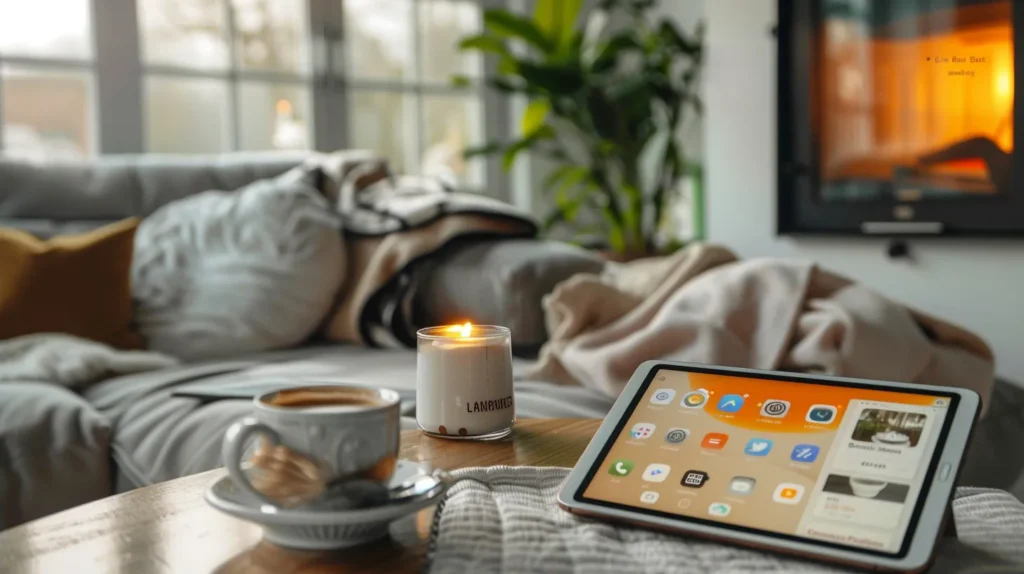
Comfort and Convenience
Using a lighting control system, you can control their lighting remotely via smartphones or voice commands. So that the lights can be adjusted without having to be physically present, and physical switches offer unparalleled comfort and convenience. Also, lighting control systems allow for the creation of customized lighting scenes for different activities, such as reading, cooking, or watching movies, enhancing comfort and usability. When integrated with home automation systems, lighting can work in tandem with other elements like climate control and security, creating a more comfortable and user-friendly environment.
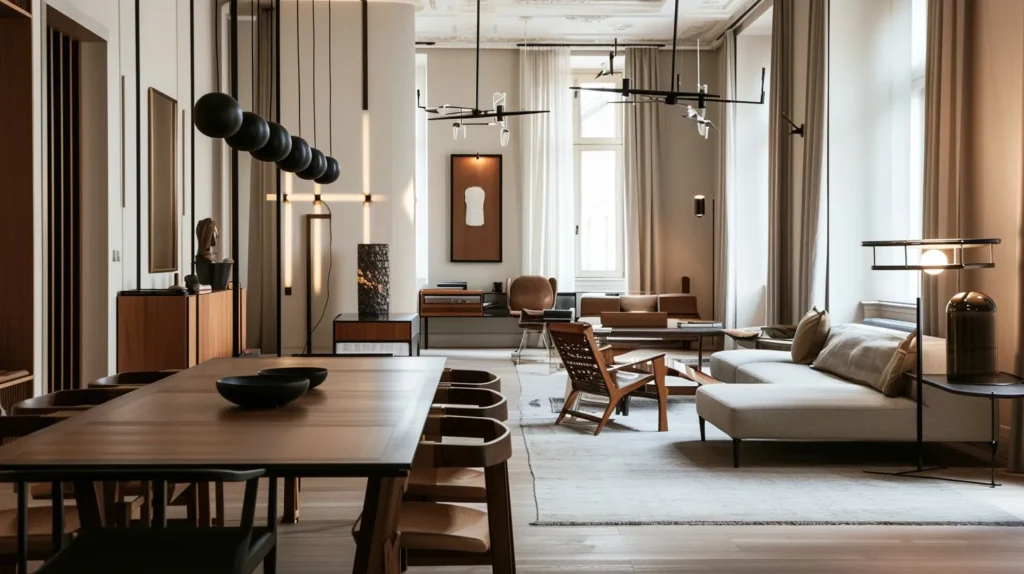
Enhanced Home Ambiance
Advanced lighting controls can adjust the color and intensity of lights to suit different moods and occasions, which is called mood lighting. Whether it’s a cozy evening at home or a vibrant dinner party, the proper lighting can set the perfect tone. You can also create and save various lighting presets to transform the ambiance with a single command instantly. This flexibility allows for easy adjustments to lighting based on the time of day or activity. Intelligent lighting systems can enhance the aesthetic appeal of a home by highlighting architectural features and decor, making spaces look more inviting and stylish.
How does the Home Automation system work?
A home automation system works by integrating many household systems and devices into a unified, easily managed network that is typically controlled through a central hub or a series of interconnected devices. The core components of a home automation system include sensors, actuators, controllers, and a user interface, all of which work together to create an intelligent and responsive environment. The central hub acts as the brain of the system, coordinating communication between devices and allowing for centralized control using an app, web interface, or voice commands. Crestron and Control 4 are the leading brands for Home Automation systems.
Let’s check a detailed explanation of how it all comes together.
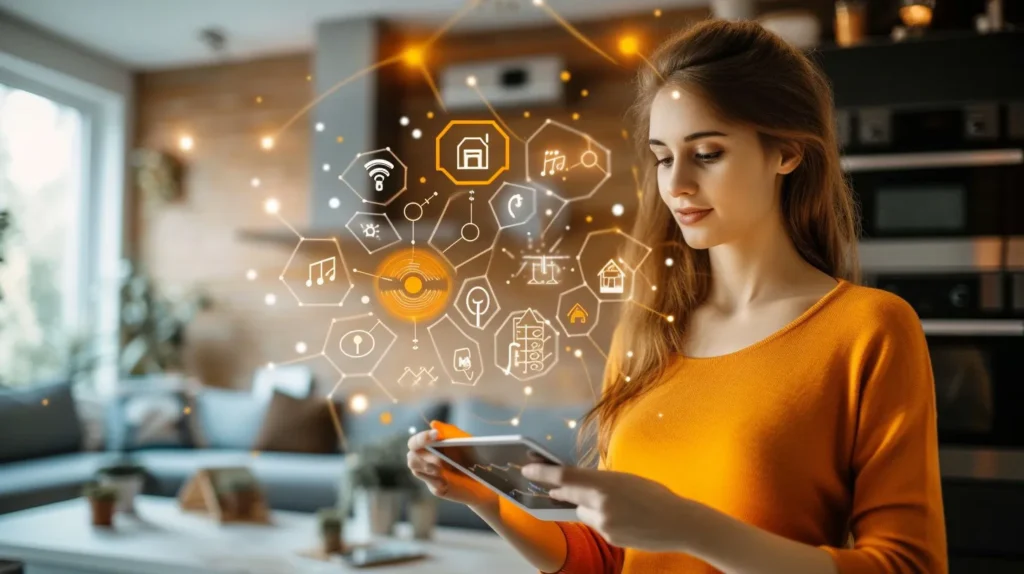
Home automation Controllers
The home automation controller, often referred to as a hub or gateway, is the central unit that processes the data from sensors and sends commands to the actuators. It acts as the brain of the home automation system, making decisions based on pre-programmed rules or machine learning algorithms. Controllers can be standalone devices specifically designed for home automation or integrated into other devices like smart speakers such as Amazon Echo or Google Home and smartphones.
Controllers communicate with sensors and actuators using various communication protocols such as Wi-Fi or proprietary systems. This communication can be wired or wireless, with wireless systems being more flexible and easier to install.
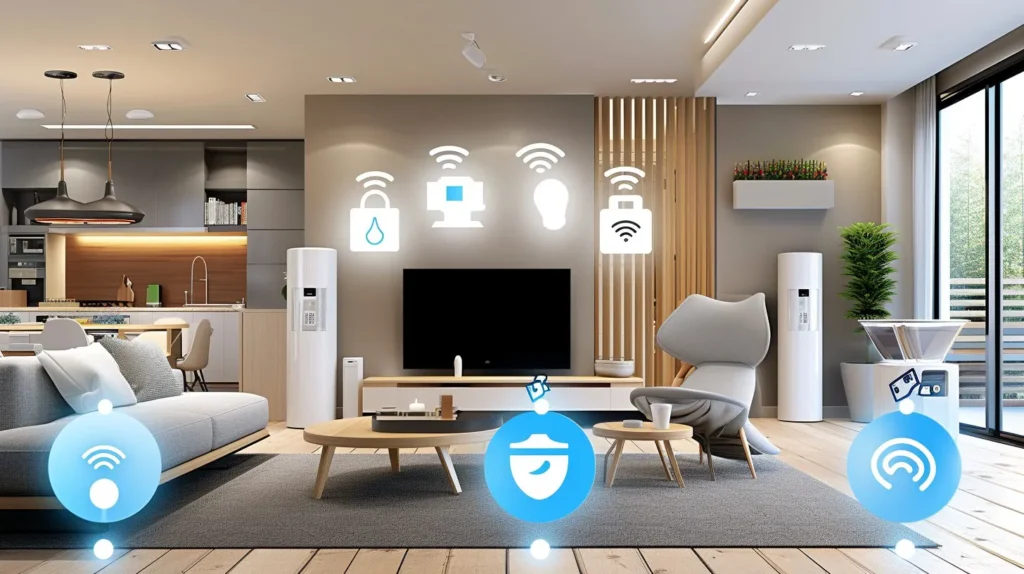
Sensors and Actuators
Sensors and actuators play a key role in home automation. Sensors gather data from the environment, such as temperature, light levels, motion, humidity, and even occupancy. Common sensors include motion detectors, temperature sensors, and light sensors. These devices constantly monitor the home environment and send real-time data to the system’s controller.
Actuators, on the other hand, are the devices that perform actions based on the data received from the sensors. They include things like smart light bulbs, thermostats, motorized blinds, and door locks. For example, if a motion sensor detects movement in a room, it can trigger an actuator to turn on the lights.
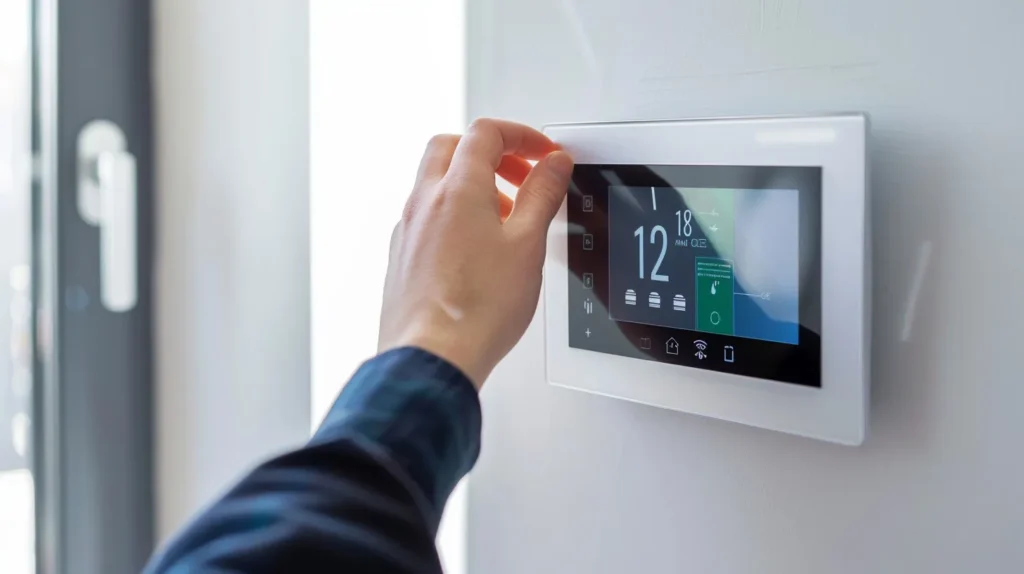
User Interface
The user interface is how homeowners communicate with the automation system. You can do this through a mobile app, a web interface, or voice commands via smart speakers. You will get peace of mind, as homeowners can check security cameras, lock or unlock doors, etc. The home automation interface allows users to monitor system status, manually control devices, and set automation rules. Like through a smartphone app, a user can adjust the thermostat, turn on the lights, or check security cameras from anywhere in the world.
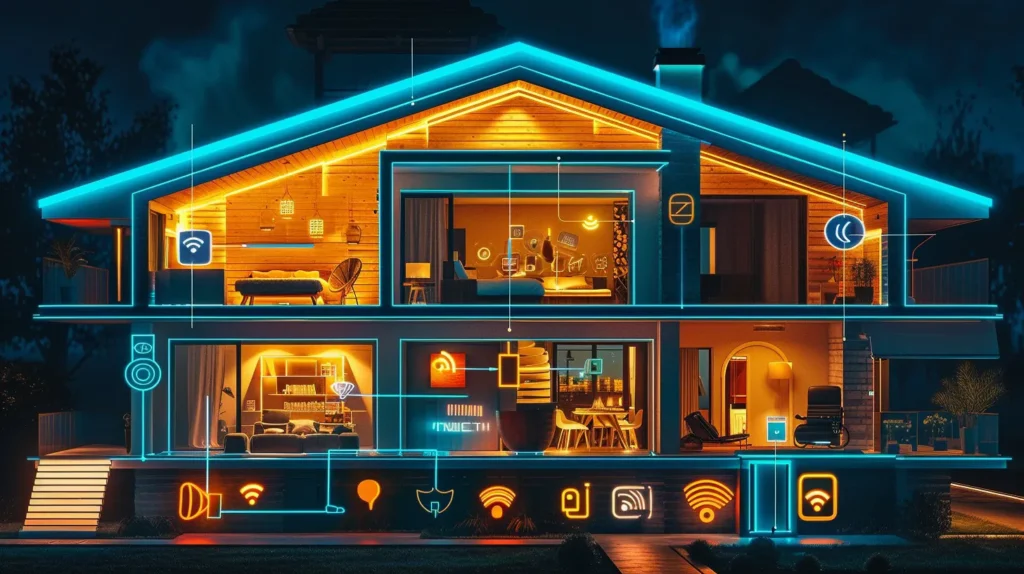
Integration with Other Systems
The home automation systems allow integration with other smart home devices and services, such as security systems, entertainment systems, home theaters, and even home appliances. It makes a more comprehensive and cohesive smart home experience. Like in a dedicated theatre room, a press of batten lights can be switched off, the projector and the rest of the electrics will be on, your recliner will come in the perfect viewing position, and you’re ready for your blockbuster. Also, integrating the lighting system with a security system can create automated responses to potential security threats, such as turning on all lights if an intrusion is detected.
The Future of Home Comfort
The future of home comfort lies in the continued evolution and seamless integration of advanced smart home technologies that create highly personalized living spaces and more intelligent, efficient, responsive, customized living environments. Innovative systems will learn individual preferences, adjusting lighting, temperature, and home entertainment settings automatically. Energy-efficient solutions powered by renewable energy sources and smart grids, intelligent energy management, and green building materials will contribute to eco-friendly living while minimizing environmental impact and reducing costs. Enhanced connectivity through the Internet of Things will enable devices to communicate and collaborate more effectively, improving security and enhancing overall comfort. As these advancements become more accessible, homes will transform into dynamic ecosystems that support and improve the well-being and luxurious lifestyle of their inhabitants, setting new standards for comfort and efficiency.
Conclusion
In conclusion, integrating Home Automation and Lighting control into your home can revolutionize the concept of home comfort, offering unparalleled convenience, efficiency, and customization that significantly elevate your lifestyle. Leading brands like Crestron, Control4, and KNX are at the forefront of this transformation. These technologies transform everyday living by integrating various home systems into a cohesive, intelligent network that adapts to individual needs and preferences.
The role of home automation engineers is crucial in this process. They design, install, and maintain sophisticated Home Automation and Lighting control systems, ensuring they operate flawlessly and meet each home’s specific needs. Their expertise is vital in creating a smart home ecosystem that not only improves comfort but also increases energy efficiency and property value.
As smart home systems continue to advance, they not only make our homes more responsive and adaptive to our needs but also contribute to a more sustainable and secure environment, indeed illuminating our lives in ways previously unimaginable. Embrace the future of home comfort and experience the remarkable transformation that home automation and lighting control can bring to your luxurious living space.

